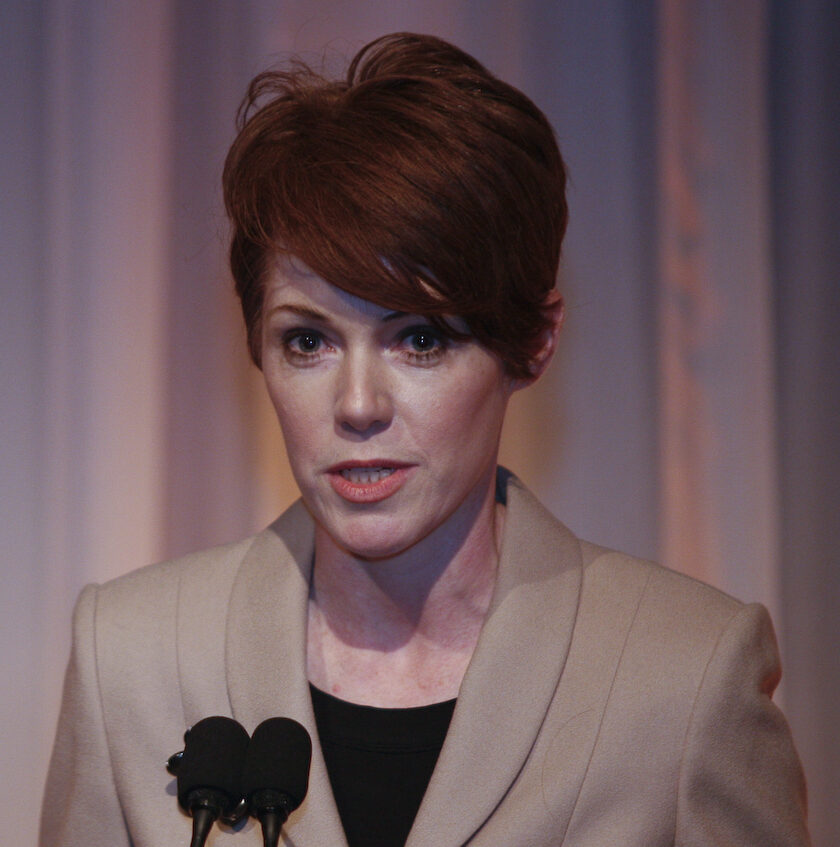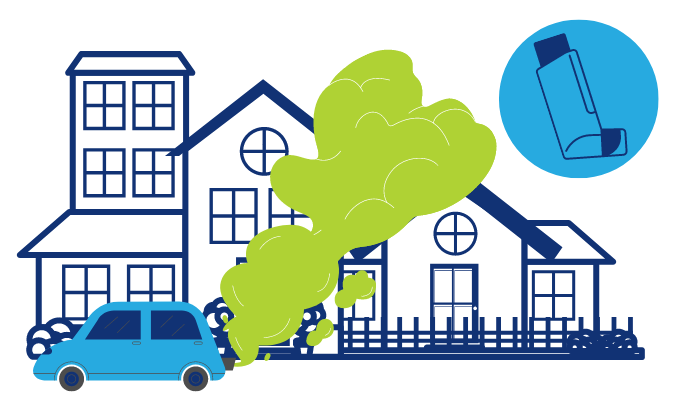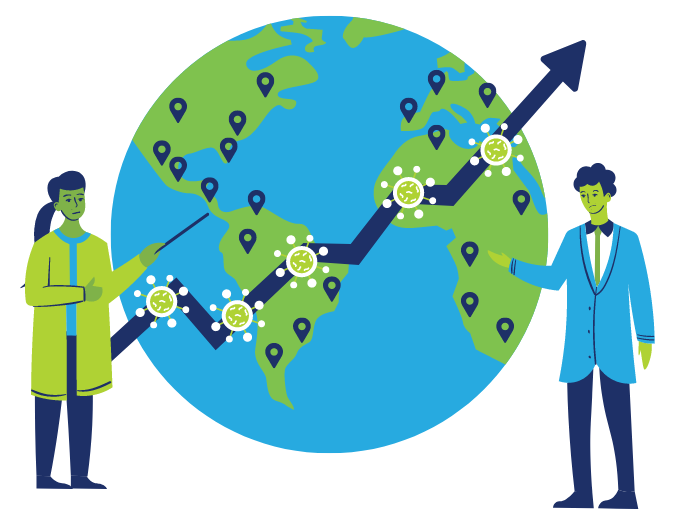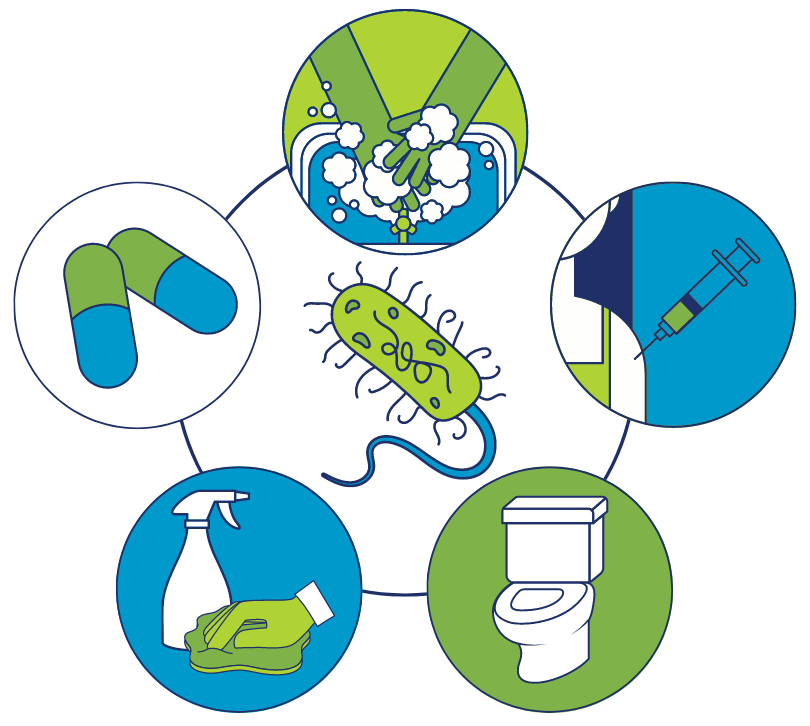
Air – it’s our most basic need. It’s far more vital than water, food, or medicine. People can survive just minutes without its most important component: oxygen.
But in much of the world, people struggling to breathe lack access to medical oxygen, a treatment that makes the difference between life and death. The COVID-19 pandemic highlighted the problem and made it exponentially worse.
“I will never forget the images,” Leith Greenslade, coordinator of the Every Breath Counts coalition, tells us on the One World, One Health podcast, “patients suffocating to death as hospitals ran out of oxygen.”
A team at the University of Washington estimates that 25 million people die every year of both acute and chronic conditions that need treatment with medical oxygen.
“It’s unclear exactly how many of the estimated seven million COVID-19 deaths could have been prevented with adequate supplies of medical oxygen, but a study of COVID-19 deaths in African intensive care units found that half of patients died without ever receiving it,” Greenslade and the One Health Trust’s Ramanan Laxminarayan wrote in a recent article. “Shamefully, world leaders have turned a blind eye to the lack of access to medical oxygen.”
Listen as Leith explains the scope of the problem and possible solutions in this episode of One World, One Health.
Maggie Fox 00:01
Hello and welcome to One World, One Health where we take a look at some of the biggest problems facing our world. I’m Maggie Fox. This podcast is brought to you by the One Health Trust with bite-sized insights into ways to help address challenges, such as infectious diseases, climate change, and pollution. We take a One Health approach that recognizes that everything on this planet — the animals, plants and people, and the climate and environment — are all linked.
Oxygen is literally life for just about everything on this planet. Most people don’t even think about it, but diseases that cause pneumonia, or that cause other breathing problems rob our bodies of the oxygen they need. It’s straightforward to treat — provide extra oxygen to patients who are having trouble. The COVID pandemic made it clear, however, that supplemental oxygen isn’t always available to the people who need it most. In this episode, we’re chatting with Leith Greenslade, Coordinator of the Every Breath Counts Coalition, which groups more than a hundred organizations helping low- and middle-income countries reduce deaths from pneumonia. Leith, thank you for joining us.
Leith Greenslade 01:09
It’s good to be here, Maggie.
Maggie Fox 01:11
Leith, it might surprise a lot of people to hear there’s a shortage of oxygen in some places when it’s literally in the air around us. Can you explain this problem?
Leith Greenslade 01:20
It shouldn’t surprise people now if they remember back to the height of the COVID pandemic. I think all through 2020 and 2021, and even into 2022, in almost every low- and middle-income country, there were images of patients, COVID patients, dying for lack of oxygen. I will never forget some of the early images from South America, which was hit hard, parts of Brazil and Peru (were) hit hard first before it swept to other parts of the world. Just patients suffocating to death as hospitals ran out of oxygen. There were babies in NICUs (who) had to be flown out to cities just to get their oxygen.
And then when we saw it moving to India, we saw patients in parking lots of hospitals across India suffocating in the backs of cars or on hospital gurneys with their family members huddled around them begging for oxygen and Africa saw similar images and the Middle East, even parts of Eastern Europe. So, this lack of access to oxygen during COVID is something that nobody should forget because we’ve just been through a punishing pandemic. Now, why did it happen? It happened because oxygen — medical oxygen — was not a priority in health systems in low- and middle-income countries.
You’ll find oxygen in hospitals in high-income countries. Go to any European hospital any American, you’ll find a very sophisticated system of making sure patients have oxygen. But this was not the case across large parts of the rest of the world. And it’s because the hospitals often didn’t have budgets to pay for oxygen. Oxygen is not cheap. But it’s also because global health organizations that were responsible for helping a lot of these countries (and) fund their health systems, they didn’t prioritize it either.
So, you know, we have large global health organizations that focus on HIV AIDS, malaria, and tuberculosis. We have GAVI (Global Alliance for Vaccines and Immunisation) that does a lot of childhood vaccines. We have a lot of support for nutrition, but we never had a global health organization responsible for oxygen. So, the countries couldn’t afford it themselves. And there wasn’t any foreign aid supporting oxygen. So, they were completely exposed when COVID hit. And what did patients need? What did COVID patients need when they had no vaccines (and) they had no medicines? They needed oxygen. It was the foundational treatment for COVID. And it’s what they didn’t have.
Maggie Fox 03:42
We know about the problem now. So, what’s the holdup with getting something done about it?
Leith Greenslade 03:47
The holdup as it often is in health is money. So, although the global health organizations finally, it took them until February 2021, to mount a serious oxygen emergency response where countries could apply for and receive emergency oxygen supplies. That group which includes the WHO and UNICEF and the Global Fund and the World Bank and all the big players, that group has moved about a billion dollars worth of oxygen supplies to more than a hundred low- and middle-income countries. That sounds like a very big number. And it is but it’s still just the tip of the iceberg.
So still, many countries don’t have (or) can’t guarantee when a patient turns up at their hospitals (that) there’ll be medical oxygen. Every week, for example, our coalition every week is receiving concerning complaints from low- and middle-income countries that they don’t have oxygen. There was a major crisis in the Gambia. You might have, your listeners might remember it where a lot of children died because the cough medicines that were being supplied from India were completely toxic.
So, children were taking cough medicines and getting poisoned and dying and many of them had to be rushed to a hospital. Well, they needed oxygen. People don’t realize if you’re a victim of poisoning, sometimes you need oxygen, and we had reports of children dying on the way to hospital because the ambulances didn’t have oxygen. So, we’re still hearing stories like this. So, we know the problem still exists. We’re very worried about what’s happening now that patients are dying for lack of oxygen.
But what keeps me up at night is we know we’re going to have another respiratory pandemic in the next decade. It could be worse than COVID. And what’s going to happen then, when suddenly we have not to tens and hundreds of patients, but thousands, potentially hundreds of thousands of patients in every country needing oxygen again?
Maggie Fox 05:31
Can we talk about why patients with COVID and any of the very many organisms that cause pneumonia might need oxygen?
Leith Greenslade 05:40
It’s because it’s not just COVID and respiratory like conditions, but preterm babies often need oxygen because their lungs haven’t developed where they can breathe themselves. So, they need help. So, oxygen for preterms and newborns in respiratory distress is a huge population. Women often need it (while) giving birth. Oxygen is a common treatment when you give birth.
Patients at home or older patients with things like COPD (chronic obstructive pulmonary disease) will often need oxygen at home just to extend their quality of life. Patients needing surgery for any purposes will need oxygen. And then of course, we have pneumonia and COVID like conditions where oxygen is life-saving. So, the special thing about medical oxygen is it’s a medicine, an essential medicine for a wide variety of conditions across many, many patient populations.
There are just some times when our natural ability to breathe in and breathe out, we take (for granted). We rarely think about breathing. And there’s oxygen around us all the time. We can’t see it, we breathe, we’re organisms that need to breathe to survive. But when we lose the function of breathing, the terror that hits the human body, if you’ve had the misfortune of watching someone struggle to breathe, when we lose that capacity for whatever reason, the terror is palpable. So, I think medical oxygen is something you know, we take for granted. Oxygen is something we take for granted. Medical oxygen is something we desperately need when we lose our ability to breathe in the atmosphere around us.
Maggie Fox 07:06
I do think sometimes people get mixed up because air and oxygen are often conflated as the same thing, and they’re not. And can we talk a little bit about the problem that people have when their lungs can’t pull the oxygen that’s in the air around us out of that air?
Leith Greenslade 07:23
Yes. So, we can talk medically about what happens to the body and the lungs and to the organs when we can’t bring enough oxygen into our bodies. It leads to organ failure. Our body, our biology, depends on our ability to breathe in oxygen from the air. What medical oxygen does is really concentrate the oxygen, the medical oxygen component of a concentrated, so that we get a real intense, if you like, burst of that more pure oxygen when we can’t take that in from the air around us (and) convert it ourselves.
So, there are many, many therapies that do that are many different ways we can convert room air into medical oxygen. It’s not just one technology. There’s many technologies we have, (such) as liquid oxygen, we can generate oxygen from special oxygen plants, the mobile concentrators, even members of your audience may know elderly patients or even not so elderly patients, (who) have an oxygen concentrator at home that plugs into the wall that they need to live. There are ventilators — it has many technologies that help the human body compensate when we can’t just take the oxygen that’s in the air around us and do what it needs to do for our bodies.
Maggie Fox 08:31
Is it expensive or difficult to bottle oxygen?
Leith Greenslade 08:35
It’s not difficult. So, the technology is very old. It’s not like, you know, when COVID hit, we needed a new vaccine, and that vaccine, that science had to be created. Oxygen is not like that. These technologies have been around for many, many, many, many years. So, we know exactly how to do this. It’s not an area that that we need to figure out. But it can be expensive.
When you think about the way most hospitals in high-income countries like in the US, Europe, they get their oxygen usually in liquid form. And it’s generated in large, large factories called air separation units. And typically, big trucks will take that from the factory to the hospital, which has a big storage facility, a big liquid storage facility, and there are pipes attached to that and it comes straight in next to the patient’s bedside. That’s typically the way it’s done in a high-income country hospital.
That’s a very expensive process. Even trucking the liquid oxygen from factory to hospital is expensive, storing it is expensive, and all the expertise you need. You need specialists, biomedical engineers, clinicians who know how to work with it. Though all those things exist in high-income country hospitals but often in many low-resource settings, they don’t have the infrastructure and also, the expertise in people (the people power) that know how to work with the oxygen. So, it’s one thing to bring the infrastructure and the oxygen and you also need the engineers that can turn that into real services for patients.
Maggie Fox 10:00
Is there some alternative to liquid oxygen?
Leith Greenslade 10:03
Well, if you don’t, if you can’t do liquid, yes, you can have a, there’s a technology called Pressure Swing Adsorption or PSA plants for short. And that’s a little oxygen, sometimes not so little oxygen generating plant that’s built on-site at the hospital. And a lot of hospitals love these because they have more control — they’re not waiting for a truck to come in and deliver liquid oxygen or cylinders (the big heavy cylinders of oxygen we see being pushed around). So, a lot of hospitals love these on-site plants because they have control, less risk that they’re going to run out.
And then there’s the little bedside concentrators on wheels, usually that we’re familiar with. You plug them into the wall, they need electricity, which often doesn’t exist in these hospitals. So, there are various sources. And you don’t have to be dependent on anyone. But many hospitals have none. They have none of the three options.
Maggie Fox 10:54
So, we’ve got all these organizations that are paying attention to vaccines, to getting drugs to HIV patients, those kinds of things. Why are so few people paying attention to oxygen?
Leith Greenslade 11:06
So, unfortunately, the Global Health architecture that we’ve built, and most of it has been built since the 2000s, when the Global Fund and GAVI were established, unfortunately, the priorities of global health don’t match disease burden. What I mean by that is we’ve picked a very few diseases or interventions like vaccines and gone very deep into those vertical areas, they’re sometimes called. But that doesn’t match the list of diseases that are actually killing people in low- and middle-income countries.
When I say to people, if you look at the global burden of disease, say across Africa, what are the top ten conditions killing Africans across all ages? They’re very shocked when the answer is pneumonia is number one. It kills more Africans than HIV AIDS and malaria even. And that was even true before COVID. So, when we know in any country, we know what the leading killers are, why does our global health architecture not respond to those burdens of disease? Why are we so vulnerable when there’s leading killers like pneumonia and very little international response matching them?
This is why countries were so exposed when COVID hit. It was a pandemic of pneumonia, basically. And pneumonia was an area that the global health actors had not focused on. And we knew that. We knew we were vulnerable and there are other areas that we are vulnerable (to). So, my appeal to the global health architecture and the leaders there is please make sure your focus areas match the burden of disease in low- and middle-income countries or we’ll have another COVID. We’ll be blindsided again.
Maggie Fox 12:39
Leith, thank you so much for joining us.
Leith Greenslade 12:42
It’s my pleasure.
Maggie Fox 12:44
Listeners, if you enjoyed this podcast, please share it. You can learn more about this podcast and other important topics at onehealthtrust.org. And let us know what else you’d like to hear about at [email protected]. Thanks for joining us.
Guest

Leith Greenslade is Co-founder and Coordinator of the Every Breath Counts Coalition, an alliance of 100 organizations working together to reduce deaths from pneumonia. She is also a member of the Executive Committee of the Lancet Global Health Commission on Medical Oxygen Security and the new Global Oxygen Alliance. She sits on the Board of TEAMFund and advises several global health and development organizations. Leith has served on the US Board of Gavi, the Vaccine Alliance, and in several positions with the Australian Government, including with the Deputy Prime Minister and Federal Minister for Health. She holds a Masters in Public Administration from the Harvard Kennedy School and a Masters in Business Administration from the Chinese University of Hong Kong. Leith is a Salzburg Global Fellow and was named Global Australian of the Year in 2021.
Credits
Hosted and written by Maggie Fox
Special guest: Leith Greenslade
Produced and edited by Samantha Serrano
Music composed and sound edited by Raquel Krügel
Transcript edited by Dipyaman Sengupta







